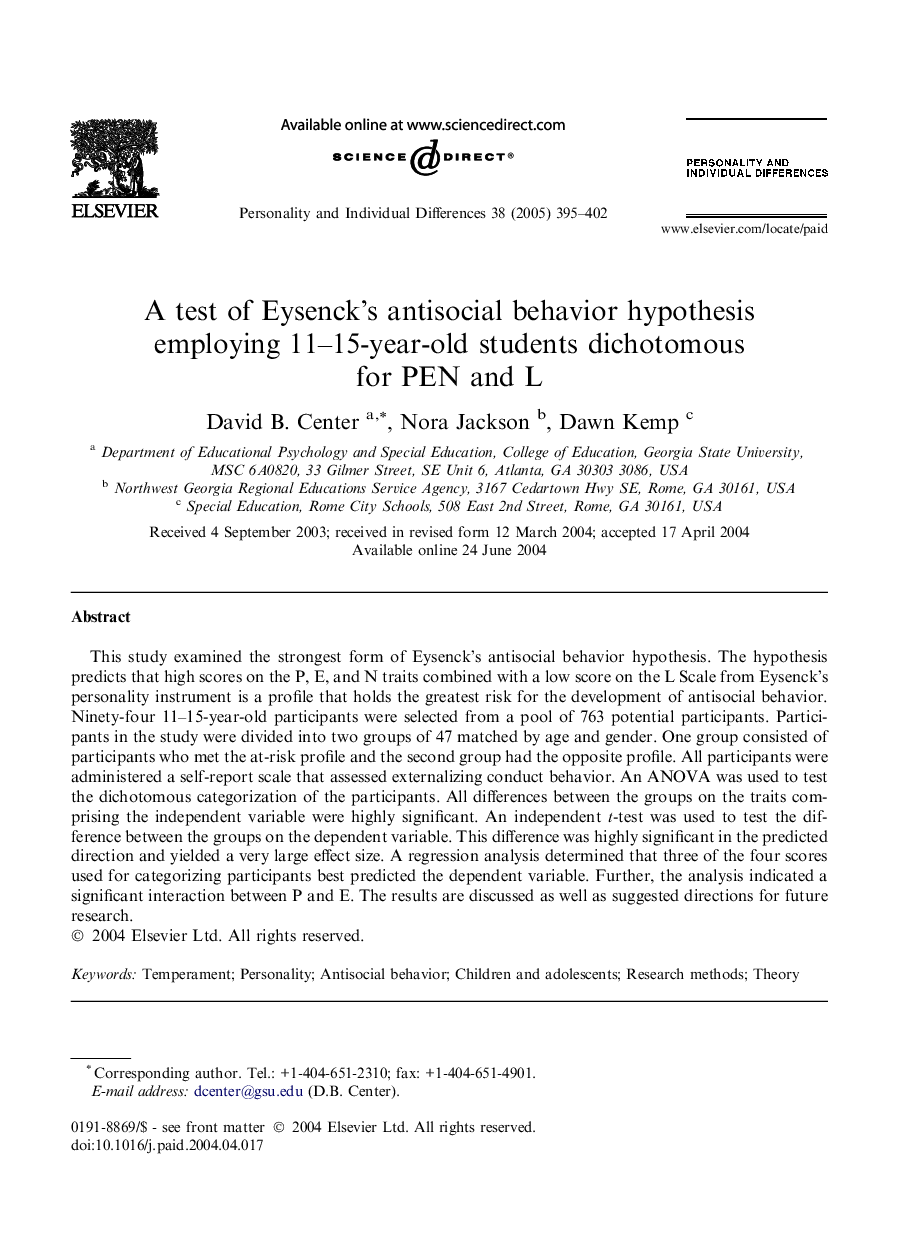| Article ID | Journal | Published Year | Pages | File Type |
|---|---|---|---|---|
| 10441123 | Personality and Individual Differences | 2005 | 8 Pages |
Abstract
This study examined the strongest form of Eysenck's antisocial behavior hypothesis. The hypothesis predicts that high scores on the P, E, and N traits combined with a low score on the L Scale from Eysenck's personality instrument is a profile that holds the greatest risk for the development of antisocial behavior. Ninety-four 11-15-year-old participants were selected from a pool of 763 potential participants. Participants in the study were divided into two groups of 47 matched by age and gender. One group consisted of participants who met the at-risk profile and the second group had the opposite profile. All participants were administered a self-report scale that assessed externalizing conduct behavior. An ANOVA was used to test the dichotomous categorization of the participants. All differences between the groups on the traits comprising the independent variable were highly significant. An independent t-test was used to test the difference between the groups on the dependent variable. This difference was highly significant in the predicted direction and yielded a very large effect size. A regression analysis determined that three of the four scores used for categorizing participants best predicted the dependent variable. Further, the analysis indicated a significant interaction between P and E. The results are discussed as well as suggested directions for future research.
Related Topics
Life Sciences
Neuroscience
Behavioral Neuroscience
Authors
David B. Center, Nora Jackson, Dawn Kemp,
